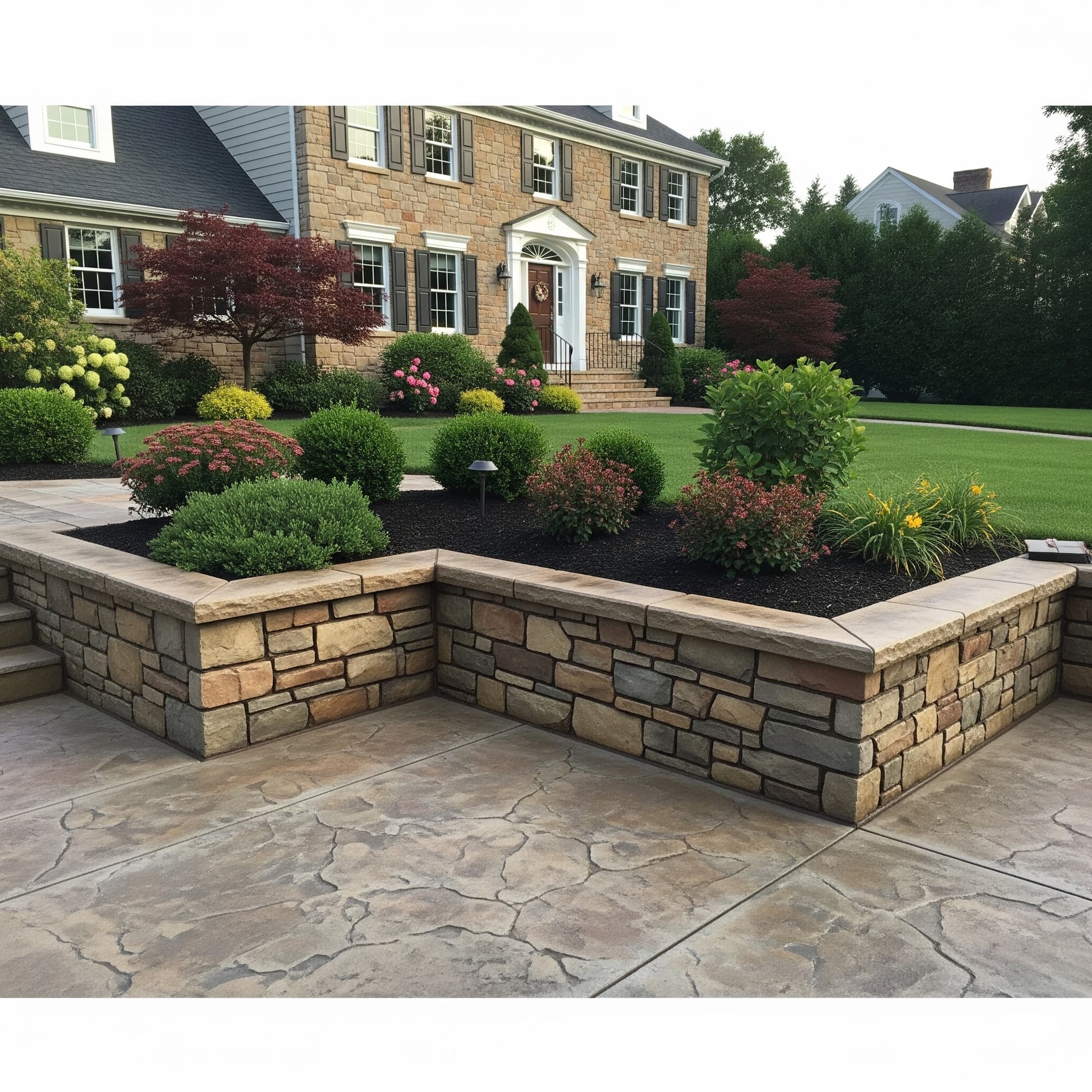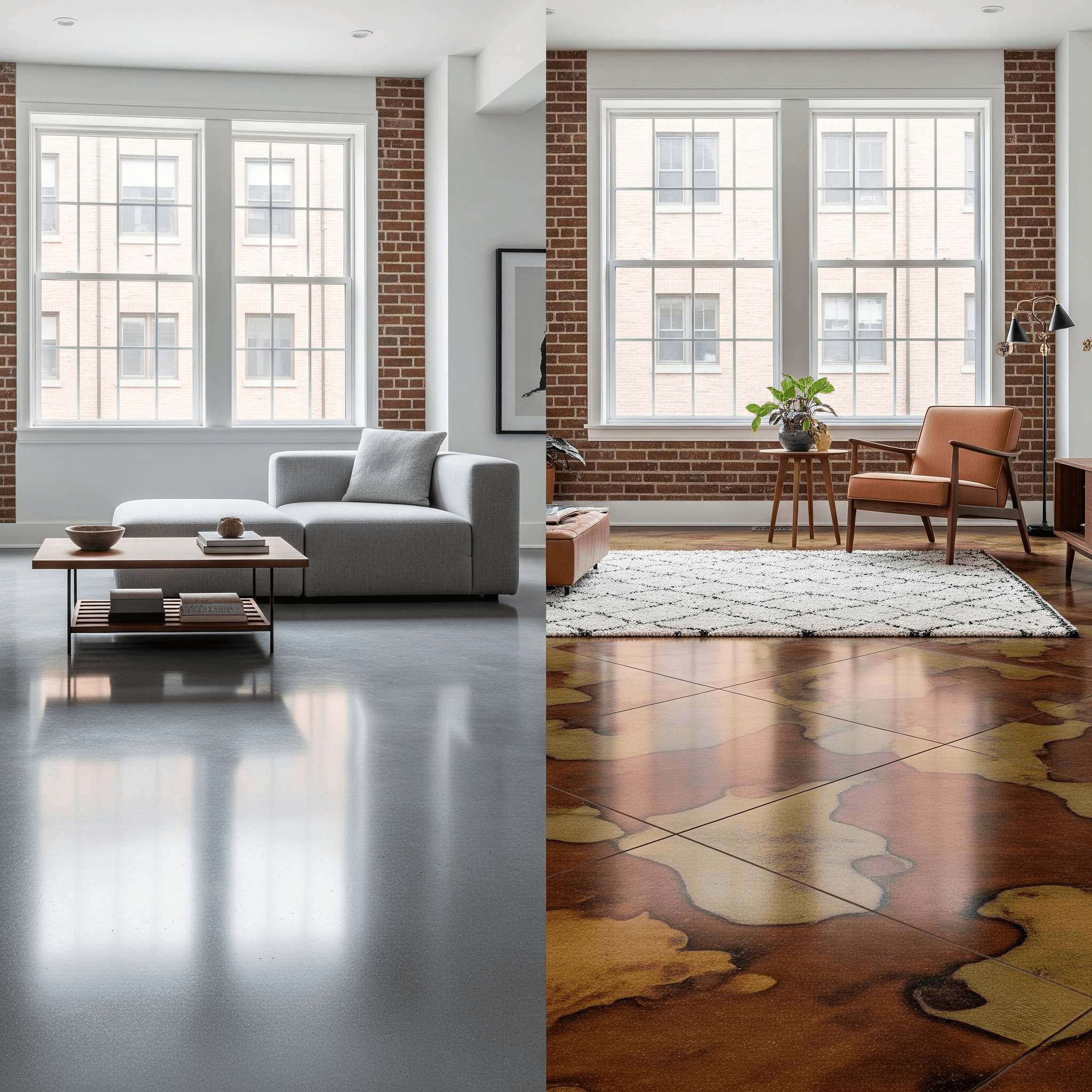
Walkway Repair Tips for Bridgeport’s Settlement-Prone Areas
Concrete Walkway
Bridgeport’s unique geographic location and soil conditions create specific challenges for concrete walkway maintenance throughout the city. From coastal areas near Long Island Sound to inland neighborhoods around the University of Bridgeport campus, properties face clay-rich soils, seasonal freeze-thaw cycles, and varying drainage conditions that contribute to walkway settlement and damage. Understanding these local factors and implementing appropriate repair strategies helps property owners maintain safe, attractive walkways while addressing the root causes of common problems.
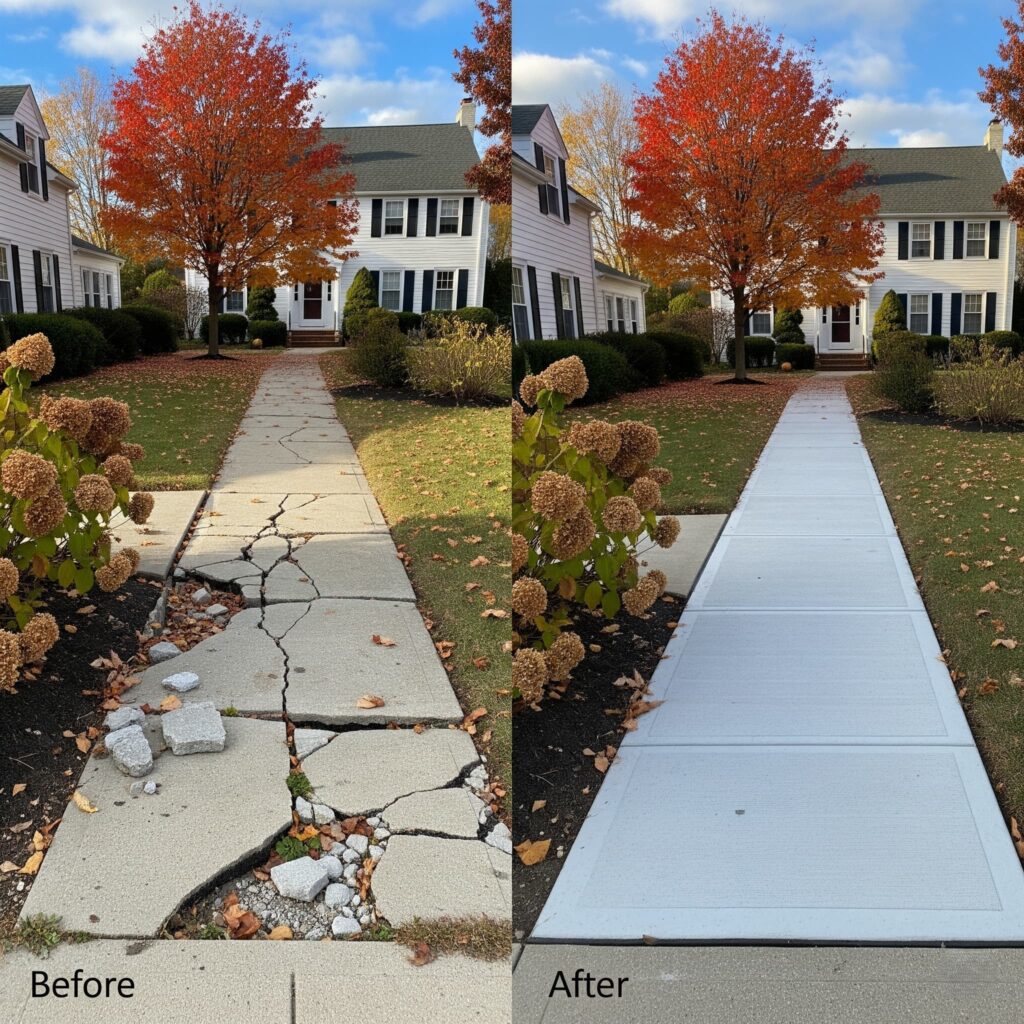
Understanding Bridgeport’s Settlement-Prone Conditions
Bridgeport’s geographic position creates a combination of environmental factors that make walkway settlement a persistent challenge. The city’s clay and loamy soils, combined with coastal influences and seasonal temperature variations, create conditions particularly susceptible to concrete movement and settling.
Clay Soil Challenges
Connecticut’s clay-rich soils expand significantly when wet and shrink during dry periods, creating ongoing stress on concrete walkways. This expansion and contraction cycle occurs throughout the year, with spring presenting maximum risk as saturated soils begin expanding after winter freezing. Properties throughout neighborhoods like Black Rock, the East End, and areas near Beardsley Park experience this clay soil movement regularly.
Freeze-Thaw Cycle Impact
Water expands approximately 9 percent when it freezes, creating substantial pressure within concrete and underlying soil. Connecticut experiences numerous freeze-thaw cycles annually, with temperatures often fluctuating above and below freezing during winter and early spring months. This repeated expansion and contraction weakens concrete structures and accelerates settlement in vulnerable areas.
Common Settlement Causes in Bridgeport
Identifying the underlying causes of walkway settlement helps property owners implement effective repair strategies. Multiple factors often combine to create settlement problems, requiring comprehensive approaches for lasting solutions.
Water-Related Settlement
Excess water represents the primary cause of concrete walkway settlement in Bridgeport. Poor drainage around foundations, clogged gutters, broken irrigation lines, and natural groundwater accumulation create soil erosion beneath walkway slabs. Properties near waterfront areas like Marina Village or Steel Point face additional challenges from higher water tables and coastal moisture influences.
Soil Instability Issues
Inadequately compacted soil during original installation creates long-term settlement problems as natural compaction occurs over time. Tree root growth near walkways can shift soil and create uneven support, while organic material decomposition in soil creates voids that allow concrete to settle. Areas with mature landscaping throughout established neighborhoods require particular attention to root-related settlement.
Professional Settlement Repair Methods
Modern repair techniques provide effective solutions for settled walkways without requiring complete replacement in most cases. Understanding these professional methods helps property owners make informed decisions about repair approaches.
Polyurethane Foam Lifting
Advanced polyurethane injection systems offer precise, long-lasting solutions for settled concrete walkways. This process involves drilling small holes in affected areas and injecting expanding foam that fills voids and lifts the concrete back to its proper position. The foam cures quickly, allowing immediate use of repaired walkways while providing superior load-bearing capacity compared to traditional methods.
Soil Stabilization Techniques
Professional contractors address underlying soil conditions through specialized injection methods that stabilize soil and prevent future settlement. These techniques work particularly well in Bridgeport’s clay soils by reducing water infiltration and providing consistent support beneath concrete slabs. Combined with proper drainage improvements, soil stabilization provides comprehensive solutions for long-term walkway stability.
Drainage Improvement Strategies
Effective drainage management represents the most critical factor in preventing future walkway settlement. Addressing water issues protects repair investments and prevents recurring problems throughout Connecticut’s challenging climate.
Surface Water Management
Proper grading directs water away from walkway areas, preventing soil saturation that leads to settlement. Installing or repairing gutters, downspouts, and drainage systems ensures effective water removal from foundation areas. Properties throughout Bridgeport benefit from extending downspouts away from walkways and ensuring positive drainage away from structures.
Subsurface Drainage Solutions
French drains, drainage tiles, and other subsurface systems address groundwater issues that contribute to soil instability. These systems work particularly well in areas with high water tables or persistent moisture problems. Professional installation ensures proper grading and material selection for Connecticut’s soil conditions and climate requirements.
Preventive Maintenance Approaches
Regular maintenance and monitoring help identify potential settlement issues before they become major problems. Proactive approaches reduce long-term repair costs and maintain walkway safety throughout seasonal changes.
Seasonal Inspection Protocols
Spring inspections after freeze-thaw cycles help identify new settlement or damage requiring attention. Look for changes in walkway elevation, new cracks, or areas where water pools during rain events. Properties throughout Bridgeport should inspect walkways monthly during the spring months when settlement issues commonly develop.
Joint Maintenance and Sealing
Proper joint sealing prevents water infiltration that contributes to settlement and freeze-thaw damage. Use flexible, weather-resistant sealants designed for Connecticut’s climate conditions. Regular joint maintenance extends walkway life and prevents minor issues from becoming major repair projects.
Timing Considerations for Repairs
Connecticut’s climate creates specific timing windows for optimal walkway repairs. Understanding these seasonal factors helps ensure successful repairs that withstand local weather conditions.
Optimal Repair Seasons
Late spring through early fall provides ideal conditions for most walkway repairs in Connecticut. Soil moisture levels stabilize after the spring thaw, and temperatures remain consistently above freezing for proper curing. Avoid repairs during periods of high soil moisture or when freeze-thaw cycles are likely within several weeks of completion.
Emergency Repair Considerations
Safety hazards may require immediate attention regardless of the season. Temporary measures like grinding high spots or installing warning signs can provide interim safety while planning comprehensive repairs for optimal weather windows. Emergency repairs should include plans for permanent solutions during appropriate seasons.
Cost-Effective Repair Strategies
Understanding repair options and their relative costs helps property owners make informed decisions that balance immediate needs with long-term value. Different approaches suit different situations and budgets.
Concrete Leveling vs. Replacement
Professional concrete leveling costs significantly less than complete replacement while providing comparable results for structurally sound walkways. Leveling addresses both settlement and underlying soil issues when properly performed. Complete replacement becomes necessary only when walkways are extensively cracked or structurally compromised beyond repair.
Staged Repair Approaches
Large walkway systems can be repaired in phases to spread costs over time while addressing the most critical safety issues first. Prioritize high-traffic areas, major elevation changes, and locations near building entrances. Phased approaches allow monitoring of repair effectiveness before proceeding with additional sections.
DIY vs. Professional Considerations
Some walkway maintenance tasks suit DIY approaches, while settlement repairs typically require professional expertise and equipment. Understanding these distinctions helps property owners allocate resources effectively.
Appropriate DIY Tasks
Basic cleaning, joint sealing, and minor crack filling can be handled by experienced homeowners using appropriate materials. Simple drainage improvements like gutter cleaning and minor grading adjustments help prevent future problems. Surface grinding of minor elevation differences may be suitable for DIY approaches with proper equipment rental.
Professional Requirements
Settlement lifting, major crack repair, and soil stabilization require professional equipment and expertise. Polyurethane injection systems, structural assessment, and drainage system installation exceed typical DIY capabilities. Professional contractors provide warranties and liability coverage protecting property owners from potential problems.
Local Regulations and Permits
Bridgeport’s sidewalk repair programs and local regulations affect property owners’ responsibilities and available assistance. Understanding these requirements helps ensure compliance while potentially reducing repair costs.
City Sidewalk Programs
Bridgeport’s Sidewalk Repair Program offers cost-sharing opportunities for qualifying property owners, with the city contributing 50 percent or more of repair costs in many cases. Property owners can identify repair needs by contacting the program and indicating their primary residence status and participation interest. This program helps reduce financial burden while improving neighborhood safety and appearance.
Permit Requirements
Most walkway repairs require permits when affecting public right-of-way or involving structural modifications. Check with Bridgeport’s building department before beginning repairs to ensure compliance with local requirements. Permit processes help ensure proper installation and compliance with accessibility standards.
Long-Term Settlement Prevention
Comprehensive approaches address both immediate repair needs and long-term prevention strategies. Understanding these factors helps create sustainable solutions for Bridgeport’s challenging soil and climate conditions.
Landscape Integration
Proper landscaping supports walkway stability through strategic plant selection and placement. Avoid planting large trees near walkways, and choose vegetation that helps manage soil moisture without creating root intrusion problems. Native plants adapted to Connecticut’s climate provide optimal performance with minimal maintenance requirements.
Ongoing Monitoring Systems
Regular monitoring helps identify developing problems before they require major repairs. Establish baseline measurements for walkway elevations and monitor changes over time. Photography documenting walkway conditions provides valuable records for tracking settlement patterns and planning maintenance schedules.
Professional Walkway Solutions with Bridgeport Concrete Solutions
At Bridgeport Concrete Solutions, we understand the unique challenges concrete walkways face throughout Bridgeport’s diverse neighborhoods and soil conditions. Our experience with Connecticut’s clay soils, freeze-thaw cycles, and coastal environmental factors ensures effective repair strategies that address both immediate safety concerns and long-term stability requirements. We provide comprehensive assessment services that identify underlying settlement causes, professional repair techniques, including polyurethane lifting and soil stabilization, and preventive maintenance recommendations tailored to local conditions. Our commitment to quality workmanship and understanding of Bridgeport’s specific challenges helps property owners maintain safe, attractive walkways that withstand Connecticut’s demanding climate and soil conditions for years to come.
LATEST POSTS

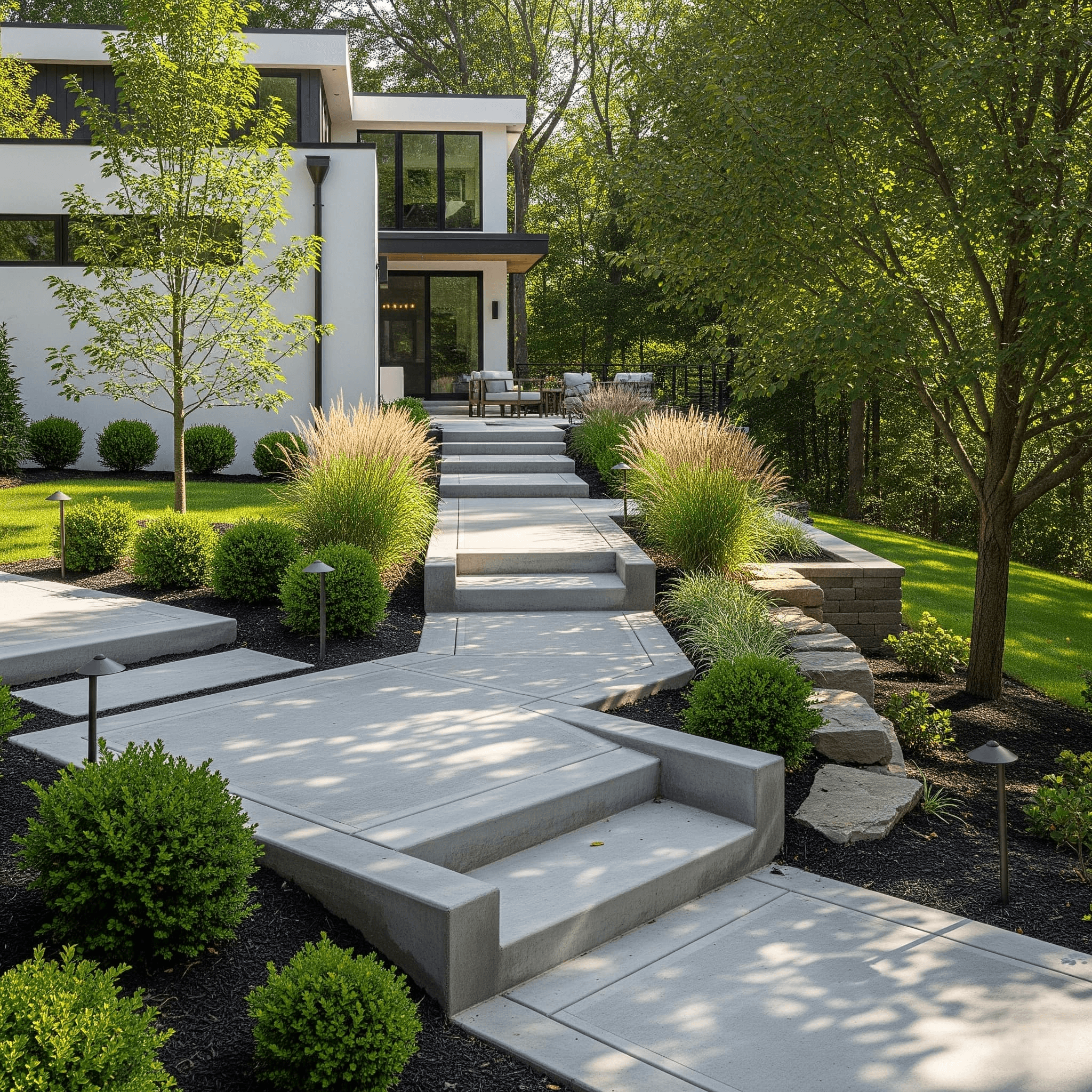
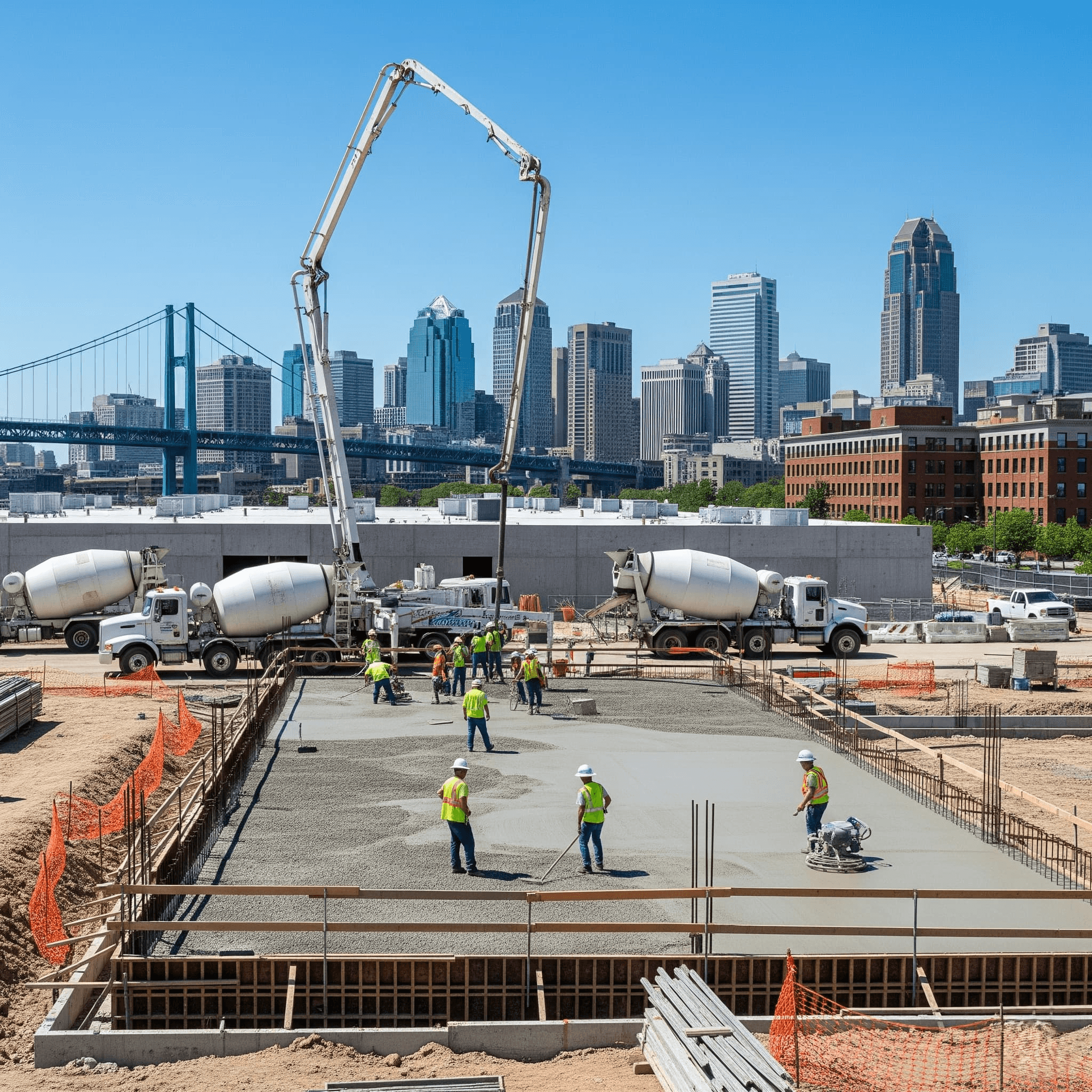
Eco-Friendly Commercial Concrete Materials Popular in Bridgeport
